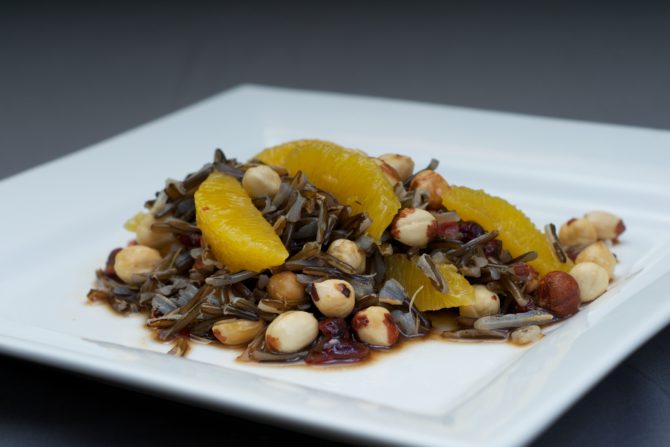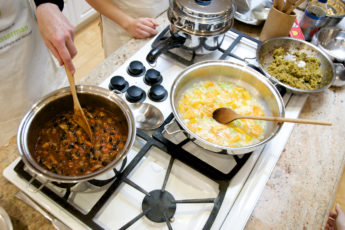This is Part 2 of Grain Goodness...
It can be quite confusing when what you think is a grain is actually a seed or grass. This is why we categorize them as Pseudo Grains.
Pseudo Grains is a category of superfood seeds that are known to be extremely high in protein, fiber and low glycemic carbohydrates. They are also bursting with vitamins and minerals like calcium, iron and magnesium. The other incredible feature about these grains is that they are all alkaline forming and gluten free, making them accessible to everyone. They are incredibly easy to digest, absorb and assimilate. They make for incredible side dishes, cereals, loafs, muffins and pilafs.
Pseudo Grains
Quinoa
What it is:
- Quinoa is an amino acid-rich (protein) seed that has a fluffy, creamy, slightly crunchy texture and a somewhat nutty flavor when cooked.
- Most commonly considered a grain, quinoa is actually a relative of leafy green vegetables like Spinach and Swiss Chard.
How to use / store it:
- Store quinoa in an airtight container. It will keep for a longer period of time, approximately three to six months, if stored in the refrigerator.
- To cook the quinoa, add one part of the grain to two parts liquid in a saucepan. After the mixture is brought to a boil, reduce the heat to simmer and cover. One cup of quinoa cooked in this method usually takes 15 minutes to prepare.
Health Benefits:
- It is a complete protein, providing all essential amino acids. It is also high in fiber, calcium and iron
Buckwheat
What it is:
- Actually a fruit seed that is related to rhubarb and sorrel, making it a suitable substitute for grains for people who are sensitive to wheat or other grains that contain protein glutens.
How to use / store it:
- Place buckwheat in an airtight container and store in a cool dry place. Buckwheat flour should be always stored in the refrigerator, while other buckwheat products should be kept refrigerated if you live in a warm climate
- After rinsing, add one-part buckwheat to two parts boiling water or broth. After the liquid has returned to a boil, turn down the heat, cover and simmer for about 30 minutes.
Health Benefits:
- Rich in flavonoids, which are phytonutrients that protect against disease by extending the action of vitamin C and acting as antioxidants.
- Buckwheat is a great source of protein, manganese, vitamin B and E.
- Buckwheat helps to balance and lower cholesterol levels while also protecting against heart disease.
- Buckwheat has mood enhancing and mental clarity properties
Wild Rice
What it is:
- Wild rice is really an aquatic seed found mostly in the upper freshwater lakes of Canada, Michigan, Wisconsin, and Minnesota in North America.
- Cooked wild rice has a rich nutty flavor, sometimes described as a smoky flavor, and a texture that is satisfyingly chewy.
- Can be as long as one-inch and the colors can vary from medium brown to nearly pure black.
How to use it / store it:
- Put the grains into a saucepan with warm water to cover, and stir the rice around to allow any particles to float to the top. Skim off the particles and drain the water. It’s best to repeat the rinsing one more time before cooking.
- 1 cup of dry wild rice to 3 cups of water. Cover, and bring to a boil over high heat. Turn heat down to medium low, and steam for 45 minutes to 1 hour.
Health Benefits:
- Is a source of lysine (an essential protein) and B vitamins.
- It has almost twice the protein content of the venerable brown rice
- It has almost SIX times the amount of folic acid as brown rice.
Teff
What it is:
- Growing in the fields, teff appears purple, gray, red, or yellowish brown. Seeds range from dark reddish brown to yellowish brown to ivory.
How to use it / store it:
- Cook teff for about 20 minutes, with 1 cup of teff in 3 cups of water
Health Benefits:
- Teff leads all the grains – by a wide margin – in its calcium content, with a cup of cooked teff offering 123 mg
- It’s also an excellent source of vitamin C, a nutrient not commonly found in grains.
- Teff is, however, high in resistant starch, a newly discovered type of dietary fiber that can benefit blood-sugar management, weight control, and colon health.
Amaranth
What it is:
- It is the seed of a plant from central America. It has a nutty flavour and can be combined well with other grains
How to use it / store it:
- Use 1 part seeds to 2 ½ parts water. Bring to a boil and then reduce to simmer
Health Benefits:
- Higher in protein than many other grains. Also the essential amino acid Lysine, which is typically hard to find in plant based foods.
- It is a good source of calcium and iron, important for bone health.
- Amaranth is also high in potassium, phosphorous and Vitamins A, E and C.
- Filled with essential oils, which help to lower hypertension, cholesterol and blood pressure.
As you can see these grain-like seeds are extremely versatile offering an array of diverse nutrition. Many of them may be new to your pantry, but I encourage you to give one or all of them a try!
Read more about Whole Grains here!
Citrus Wild Rice
- Yield: 8 Servings
- Prep: 10 mins
- Cook: 45 mins
- Ready In: 55 mins
Wild rice is actually not truly rice. It is a sea grass – making it unique. It is high in fiber and definitely high in flavour as it has a nutty texture. It cooks best when it is soaked over night – you know that it is ready when the outer husk starts to split and curl…you’ll see!
Ingredients
Instructions
1. Drain soaked rice and place in medium saucepan. Add 2 cups of water and salt and bring to boil.
Lower heat and simmer, covered, until grains have burst and are tender but still chewy (about
30-35 minutes). Drain and set aside in medium bowl.
2. Cut broccoli into small florets, place in steamer basket over boiling water for 3 minutes until dark and tender.
Run under cool water to halt the cooking.
3. Preheat oven to 325 F. Toast hazel nuts in oven until center are golden, about 5 -10 minutes. Let
cool and rub in towel to remove as much of the skins as possible. (Or you can purchase organic dry
roasted hazelnuts!)
4. Soak Cranberries in orange juice for 5-10 minutes.
5. Add the broccoli and the spices to the warm rice. Toss with vinaigrette.
6. Just before serving, combine hazelnuts and cranberries with rice. Season with salt and pepper and
garnish with supremed orange slices.



